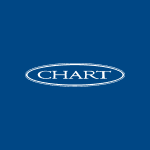Chart Q3 2021 Earnings Report
Key Takeaways
Chart Industries' Q3 2021 results reflect challenges from supply chain, labor, and logistics, offset by strong demand and backlog growth. Sales increased by 20.2% year-over-year, but margins were impacted by rapidly accelerating costs. The company is taking actions to address these cost pressures and anticipates improved profitability in 2022.
Orders reached $350.2 million, leading to a record backlog of $1,102.2 million.
Sales increased 20.2% year-over-year to $328.3 million (organic increase of 13.4%).
Reported EPS was $0.42, with adjusted non-diluted EPS at $0.81 inclusive of all investment activity.
Full year 2021 sales guidance is $1.31 billion to $1.33 billion, and adjusted non-diluted EPS is expected to be $2.75 to $3.10.
Chart
Chart
Forward Guidance
Chart Industries anticipates improved profitability in the fourth quarter of 2021 and expects strong growth in 2022, driven by increased demand and strategic actions. 2022 full year sales outlook is increased to the range of $1.70 billion to $1.85 billion and adjusted EPS is expected to be in the range of $5.25 to $6.50.
Positive Outlook
- Anticipated meaningful profitable growth in 2022 and beyond.
- Structural pricing and cost reduction steps taken to address cost pressures.
- Year-to-date trend of broad-based demand.
- Fourth consecutive record backlog quarter.
- Expectation of traditional markets returning.
Challenges Ahead
- Near-term cost pressures challenged margins in the third quarter.
- Rapidly increased material costs in the third quarter 2021.
- Force Majeure issued to industrial customers on nitrogen and argon allocations due to COVID-19 oxygen needs.
- Increases on container cost and road freight costs, coupled with the lack of availability of drivers, trucks, packaging and port congestion.
- Availability and cost of labor, including COVID-19 labor impacts.
